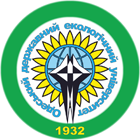Authors: Ivanov, S.V., and J.O. Palamarchuk
Year: 2008
Issue: 05
Pages: 100-111
Abstract
Quantitative precipitation forecasts are diagnosed and systematic model errors of precipitation over the North Atlantic and European continent are eval ated in he MM5v3.7 model. Quantitative estim tes are based on a u t a comparison of model fields against ERA40 reanalysis data. It is shown that the model redistributes water vapor from the middle and upper atmosphere toward the boundary layer. The maximum of the systematic humidity error in the vertical direction is located at the 850 hPa. The model overestimates precipitation, particularly convective form, over the warm ocean surface. Also, the model redistributes water from large scale to convective precipitation within a stationary or slow depression in the high latitudes over the ocean. The phase error is a typical phenomenon in the regions of the heavy and moderate precipitation rates. The set of parameterization schemes earlier defined as an optimal for major forecast variables in extratropics during the winter season has found a conformation for precipitation forecasts as well.
Tags: convective and large scale precipitations; the set of parameterization schemes; the systematic model error
Bibliography
- Toth Z., Kalnay E., Tracton S. M., Wobus R., Irwin J. A synoptic evaluation of the NCEP Ensemble // Weather and Forecasting. – v.12. – p.140-153.
- Raible C. C., Bischof G., Fraedrich K., Kirk E. Statistical single station short-term forecasting of temperature and probability of precipitation: Area interpolation and NWP – combination // Weather and Forecasting. – v.14. – p.203-214.
- Theis S., Damrath U., H nse A., Renner V.e St tistical pos processing of weather parameters for the DWD high a t resolution model LM // 1st SRNWP Workshop on statistical adaptation, SWSA. 2000.
- Austin P. M. Relation between measured radar reflectivity and surface rainfall // Mon.Wea.Rev. 1987. – v.115. – p.1053–1070.
- Crum T. D., Saffle R. E., Wilson J. W. An update on the NEXRAD program and future WSR-88D support to operations // Weather and Forecasting. – v.13. – p.253–262.
- Pierce D.W., Barnett T.P., Fetzer E.J., Gleckler P.J. Three-dimensional tropospheric water vapor in coupled climate models compared with observations from the AIRS satellite system // Geophys.Res.Let. 2006. – v.33. – L21701.
- Huang Y., Ramaswamy V., Soden B.J. An investigation of the sensitivity of the clear-sky outgoing longwave radiation to atmospheric temperature and water vapor // J.Geophys.Res. 2007. – v.112. – D05104.
- Bauer P., Lopez P., Salmond D., Benedetti A., Saarinen S., Bonazzola M. Implementation of 1D+4D-Var assimilation of precipitation-affected microwave radiances at ECMWF // Q.J.R.Meteorol.Soc. 2007. – v.132. – p.2277-2332.
- Bowler N.E., Pierce C.E., Seed A.W. STEPS: A probabilistic precipitation forecasting scheme which merges an extrapolation nowcast with downscaled NWP // Q.J.R.Meteorol.Soc. 2007. – v.132. – p.2127-2155.
- Bei N., Zhang F. Impacts of initial condition errors on mesoscale predictability of heavy precipitation along the Mei-Yu front of China // Q.J.R.Meteorol.Soc. 2007. – v.133. – p.83-99.
- Bousquet O., Lin A., Zawadzki I. Analysis of scale dependence of quantitative precipitation forecast verification: A case-study over the Mackenzie river basin // Q.J.R.Meteorol.Soc. 2007. – v.132. – p.21072125.
- Дымников В.П., Филатов А.Н. Устойчивость крупномасштабных атмосферных процессов. – Л.: Гидрометеоиздат, 1990. –240с.
- Uppala S.M., Kållberg P.W., Simmons A.J., Andrae U., etc. The ERA-40 re-analysis // Q.J.R.Meteorol.Soc. 2005. – v.131. – p.2961-3012.
- Иванов С.В., Паламарчук Ю.О. Оценка систематической ошибки модели ММ5 при различных схемах параметризации // Украинский Гидрометеорологический журнал. 2007. – №2 (в печати).
- Dudhia J. A nonhydrostatic version of the Penn State/NCAR mesoscale model: Validation tests and simulation of an Atlantic cyclone and cold front // Mon.Wea.Rev. – v.121. – p.1493-1513.
- Hack J. J., Boville B. A., Briegleb B. P., Kiehl J. T., Rasch P. J., Williamson D. L. Description of the NCAR Community Climate Model (CCM2) // NCAR Technical Note. – NCAR/TN-382+STR. – 120 pp.
- Grell G. A., Dudhia J., Stauffer D.R. A description of the fifth-generation Penn State/NCAR mesoscale model (MM5) // NCAR Technical Note, 1994. – NCAR/TN-398+STR. – 117 pp.
- Janjic Z.I. The step-mountain Eta coordinate model: Further development of the convection, viscous sublayer, and turbulent closure schemes // Mon.Wea.Rev. 1994. – v.122. – p.927-945.
- Kain J. S., Fritsch J.M. The representation of cumulus convection in numerical models. Meteor. Soc., 1993. – 246 pp.
- Hong S.-Y., Pan H.-L. Nonlocal boundary layer vertical diffusion in a medium-range forecast model // Mon.Wea.Rev. 1996. – v.124. – p.2322-2339.
- Climate Change 2001. Houghton J.T. – Cambridge Univ. Press, New York. 2001. – 881 pp.
- Fetzer E.J., Lambrigtsen B.H., Eldering A., Aumann H.H., Chahine M.T. Biases in total precipitable water vapor climatologies from Atmospheric Infrared Sounder and Advanced Microwave Scanning Radiometer // J.Geophys.Res. 2006. – v.111. – D09S16.



